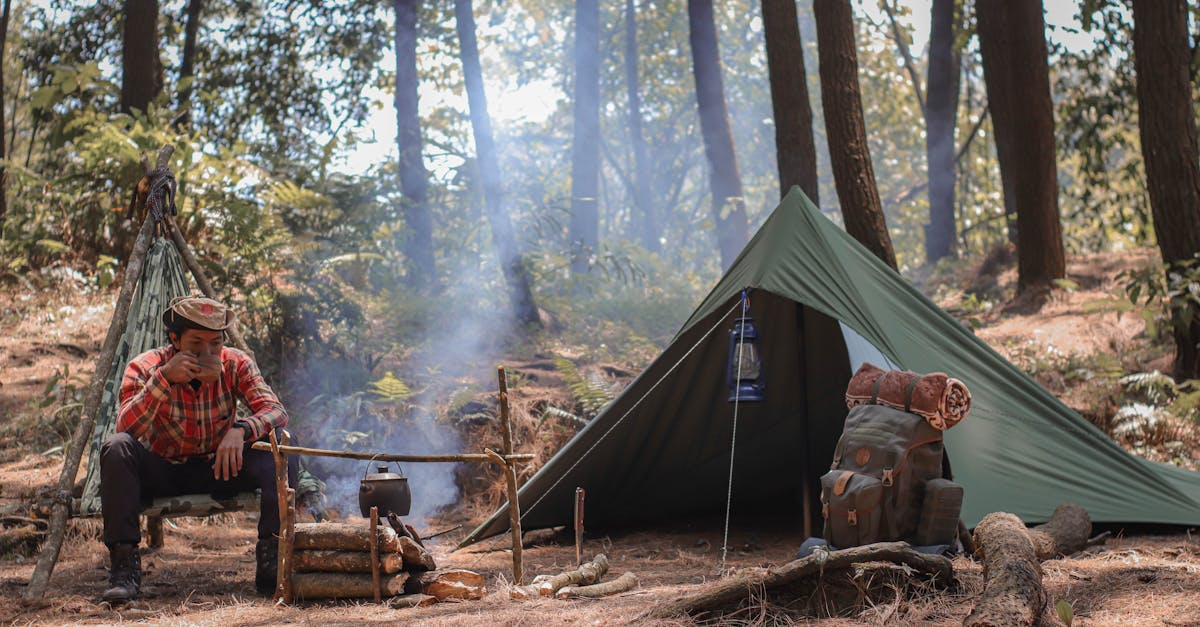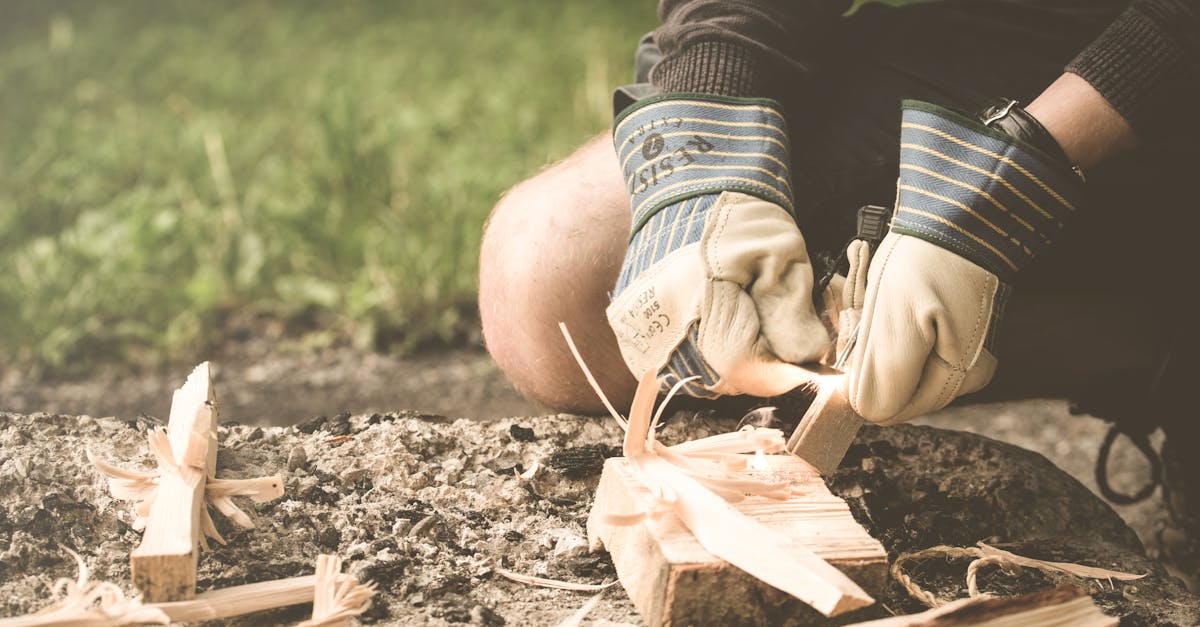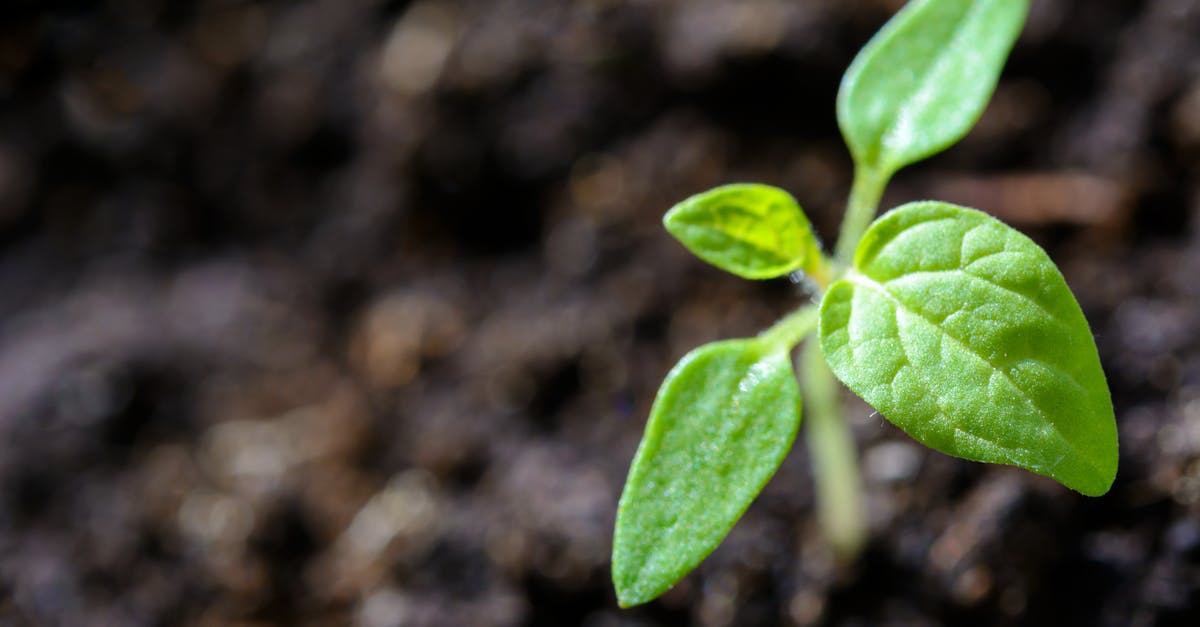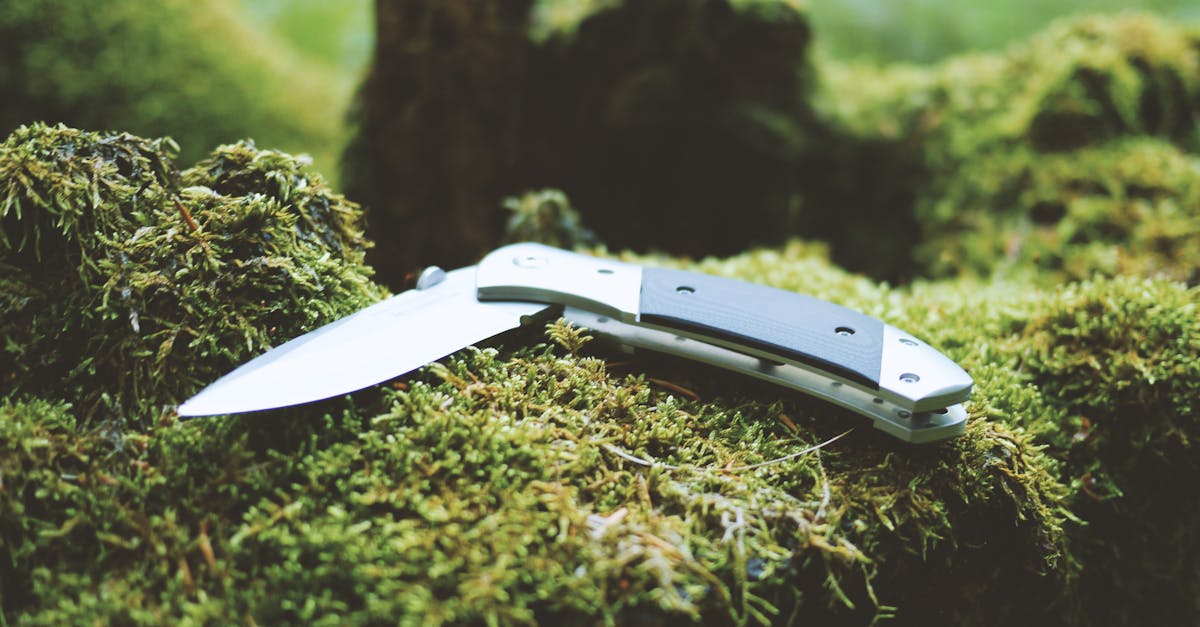The wilderness can be a beautiful and awe-inspiring place, but it can also be dangerous and unpredictable. Imagine finding yourself lost in the heart of the wilderness with no food, water or shelter. This is a scenario that can easily happen to anyone who ventures into the great outdoors without proper preparation. Even experienced hikers and campers can find themselves in precarious situations when unexpected weather conditions or accidents occur.
That’s where wilderness survival skills come in: learning how to find food, water, and shelter in the wild; making fire without matches; navigating without a compass; treating injuries; and crafting tools for hunting and protection. In this article, we will explore 10 must-know wilderness survival tips that will equip you with the necessary knowledge and skills to survive in case of an emergency situation. Whether you’re planning on a day hike or an extended backcountry trip, this guide has got you covered.
The Importance of Wilderness Survival Skills
As nature enthusiasts and outdoor adventurers, we all have a natural love for exploring the wild. However, we cannot ignore the fact that exploring the wilderness comes with its fair share of risks and dangers. It is crucial to understand that accidents can happen at any time, leaving you stranded in a potentially life-threatening situation. Therefore, it is imperative to equip ourselves with the necessary survival skills before embarking on an adventure.
The ability to survive in the wilderness not only provides us with a sense of security but also gives us the confidence to explore new terrains without fear or worry. Wilderness survival skills encompass a wide range of techniques that enable us to thrive in harsh environments while keeping ourselves safe from danger.
Having the knowledge and skills required for wilderness survival can make all the difference between life and death in critical situations. Whether you are lost or stranded, being able to find food and water sources or build shelter can help you survive until help arrives, or until you are able to make your way back home safely. Therefore, it’s essential that everyone who ventures into nature has at least basic knowledge about wilderness survival techniques.
 Finding and Purifying Water Sources
Finding and Purifying Water Sources
Importance of Clean Water
When it comes to wilderness survival, finding and purifying water is one of the most crucial skills you can have. Clean water is essential for staying hydrated and avoiding illnesses caused by harmful bacteria, viruses, and parasites found in untreated water sources. Unfortunately, many natural water sources such as streams, lakes, and rivers may contain various pollutants that can make you sick. Therefore, it’s vital to know how to find clean water sources and purify them before drinking.
Finding Clean Water Sources
The first step in finding clean drinking water is to identify potential sources around your area. Look for flowing bodies of water like creeks or rivers which are less likely to be contaminated than standing stagnant pools of water which can harbor harmful bacteria. If you are hiking in mountainous regions, melting snow or ice can be a good source of drinking water if it is purified properly.
If there’s no running stream nearby, keep an eye on the terrain as well as vegetation which normally grows wherever there’s moisture within the area. Birds tend to fly where they find plenty of food and fresh drinking spots so looking out for their movements could lead you towards a source of drinking water.
Purifying Drinking Water
After finding a suitable source of drinking water from the wilds or mountainside areas, it’s time to purify the fluid. Boiling your drinkable liquid for at least 5 minutes will effectively kill any harmful pathogens present in freshwater; however boiling may not get rid off all toxins like chemicals that could still be present even after boiling so if possible always choose other methods over boiling.
Another way to purify your fluid is through chemical treatments by adding iodine tablets or chlorine drops. These types of chemicals are easily available and can be stored in your backpack. Though they can produce some unpleasant taste, they are still a better option than drinking untreated water which could lead to serious sickness like diarrhea.
Lastly, using a water filter is the simplest way to purify your drinking water while on the go. Water filters come in a variety of shapes and sizes, from straw-like devices that purify as you drink, to larger hand-pumped models that can filter large quantities of water in one go. Make sure to follow the manufacturer’s instructions for proper use and maintenance of your water filter since every product comes with specific guidelines.
 Building a Survival Shelter
Building a Survival Shelter
When you’re in the wild, having a shelter to protect yourself from the elements is essential. In this section, we’ll cover the best ways to build a survival shelter.
Gather Materials
The first step in building a survival shelter is to gather materials. Look for branches, leaves and other debris that can be used as insulation. You can also use natural resources such as rocks and boulders to create walls or support beams for your shelter.
If you have a tarp or emergency blanket, these can be used as well. However, it’s important not to rely on these items alone as they may not hold up under extreme conditions.
Choose the Right Location
The location of your survival shelter is just as important as the materials you use. Look for an area that provides natural protection from wind and rain such as under large trees or against rock formations.
Avoid areas prone to flash flooding or close to bodies of water where insects like mosquitoes and ticks thrive. You should also steer clear of animal trails or dens that could attract unwanted visitors while you’re sleeping.
Build Your Shelter
The type of shelter you build will depend on your environment, materials available and personal preference. Some popular options are lean-to shelters, teepees and debris huts.
A lean-to shelter is simple to build by propping up branches against a tree at an angle to create a slanted roof over a flat bed of leaves or other insulation material. A teepee requires more poles but provides more space inside for multiple people or equipment storage.
A debris hut involves creating walls out of branches then piling leaves on top for insulation before crawling inside like a cave. Remember that whichever style you choose, it’s important to create a sturdy structure that will protect you from the elements and be comfortable to sleep in.
 Starting a fire without matches
Starting a fire without matches
When you’re lost in the wilderness, starting a fire can be crucial for survival. But what if you don’t have matches or a lighter? These methods will help you start a fire with limited resources.
Bow drill method
The bow drill method involves using friction to create an ember that will eventually ignite your kindling. You’ll need a bow, spindle, fireboard, and socket. It takes patience and practice to master this technique, but it’s effective and reliable.
To start the bow drill method, place the spindle on the fireboard and hold it in place with your foot or another object. Use the socket to put pressure on top of the spindle while moving the bow back and forth quickly. This will create friction that generates heat and ignites your kindling.
Ferrocerium rod method
If you have a ferrocerium rod (also known as a “firesteel”) in your survival kit, you can use it to start a fire by striking it with a metal object like a knife blade or rock. The sparks generated from this process ignite your kindling.
When using this method, hold the ferrocerium rod in one hand while using your other hand to hold whatever metal object you’re using to strike it with. Aim for the ferrocerium rod’s edge at an angle of about 45 degrees and strike down forcefully while holding it close to your kindling.
Solar ignition method
If all else fails, you can use sunlight to start a fire by focusing its rays onto dry tinder. This is most easily done with magnifying lenses like those found in glasses or camera lenses.
To use this method effectively, find some dry grass or other tinder and hold your magnifying glass about an inch away from it. Angle the magnifying glass until the sunlight is focused onto the tinder, and hold it steady until you see smoke. Once the smoke develops, gently blow on the tinder to create a flame.
 Identifying Edible Plants and Animals
Identifying Edible Plants and Animals
Knowing how to identify edible plants and animals can be a game-changer in a survival situation. While it’s important to know how to hunt and fish, it’s equally important to understand which plants are safe to eat and which ones are poisonous.
Plant Identification
The first step in identifying edible plants is learning how to recognize the different species. Some common edible plants include dandelion, cattail, chickweed, and wild onion. It’s essential that you learn how to distinguish these from their poisonous counterparts. Take note of leaves, flowers, roots, and fruits when identifying plants.
Gather only the parts of the plant you know are safe to eat. Taste a small amount before consuming large quantities; some people may have an allergic reaction or find the taste unpalatable.
Animal Identification
Hunting for food can be an effective way of surviving in the wilderness. However, not all animals are safe or easy to catch. Be sure that you’re not hunting any protected species or breaking any local hunting laws.
If you do decide to hunt for food in the wilderness, take time learning about animal tracks and droppings so you can follow them back to their sources. Some common game animals that can be hunted for food include rabbits, squirrels, fish (if near water), deer (if licensed), raccoons (if they haven’t been eating garbage), wild boar (if they exist where you are), birds like ducks or geese.
Dangers of Misidentification
Misidentification of edible plants or animals could lead potentially fatal consequences such as sicknesses or even death; therefore it is critical that your identification skills become advanced enough that you no longer need to cross your fingers before ingesting something new.
Make sure you have trustworthy resources, such as field guides or survival manuals, to help you identify edible plants and animals. Do not rely solely on online resources as they may provide unreliable information. Remember that some plants may vary in their edibility based on their location and the time of year.
Overall, identifying edible plants and animals can be a valuable skill to have in a survival situation. With practice, patience, and attention to detail, it’s possible to forage for food in the wild safely and effectively.
 Navigating without a compass
Navigating without a compass
Getting lost in the wilderness is a frightening and dangerous experience. While carrying a compass is always recommended, sometimes it’s just not possible. In this situation, it’s essential to know how to navigate through natural signs and landmarks in order to find your way back to civilization.
Using the sun and stars
One of the most reliable ways of navigating without a compass is by using celestial bodies like the sun and stars. During daylight hours, determine your direction by using an analogue watch as a makeshift compass. Point the hour hand towards the sun; halfway between the hour hand and 12 o’clock will indicate south in the northern hemisphere or north if you are in southern hemisphere. At night, use stars like Polaris (the North Star) to find north by drawing an imaginary line from it down towards the horizon.
Identifying geographic features
Another effective way of orienting oneself without a compass is by being able to identify geographic features such as mountains, rivers or valleys that can act as natural markers for direction. Mountains typically have a broad side facing south; so if you’re standing on one side of it, you’ll be facing north. In addition, rivers usually flow towards large bodies of water like oceans or lakes which can give you an indication of which direction lies civilization.
Using nature’s indicators
Nature provides several other navigational aids such as moss growing on trees which usually grows on the northern side indicating that one should walk south if lost in forested areas with no trails or landmarks around them. Knowing where different plant species grow can also help one determine their position – certain plants only grow at certain elevations or soil types which are unique to specific ecosystems.
Navigating without a compass may seem daunting but following these simple techniques can be the difference between life and death. By using natural signs, landmarks and celestial bodies one can successfully make their way back to civilization.
Managing Injuries and Illnesses
Wilderness survival situations can be unpredictable, and injuries and illnesses are bound to happen. Knowing how to manage them can mean the difference between life and death. Here are some essential tips for managing injuries and illnesses in the wilderness:
First Aid Kit
Packing a basic first aid kit is essential when venturing into the backcountry. The kit should include items such as adhesive bandages, gauze pads, antiseptic wipes, medical tape, tweezers, safety pins, ibuprofen or acetaminophen for pain relief, and any prescription medications required by individuals in your party. Make sure you know how to use all items in your kit.
Splinting Broken Bones
In the event of a broken bone or sprain, it’s important to immobilize the affected area until professional medical help arrives. You can create a splint out of materials such as sticks or branches wrapped with clothing or bandages. If possible, elevate the injured limb above heart level to decrease swelling.
Preventing Hypothermia
Hypothermia is a dangerous condition that occurs when your body loses heat faster than it can produce heat. Symptoms include shivering, confusion, slurred speech, and loss of coordination. To prevent hypothermia in cold weather conditions, wear appropriate clothing layers that wick moisture away from your skin and trap warm air close to your body. Stay dry as much as possible by avoiding sweating through overexertion or removing wet clothing immediately. Remember that prevention is always key when it comes to managing injuries and illnesses in the wild. Take necessary precautions such as wearing appropriate safety gear while hiking or camping; staying hydrated; eating nutritious meals; and knowing how to identify potential hazards like poisonous plants or venomous animals.
 Essential Wilderness Tools to Pack
Essential Wilderness Tools to Pack
When venturing into the wilderness, it is essential to pack the right tools that will help you survive and thrive. These tools include:
A Good Quality Knife
A knife is one of the most important tools to pack when going into the wilderness. It can be used for various purposes, including building shelter, preparing food, and starting a fire. You need a high-quality knife that is durable and strong enough to withstand harsh conditions. A good knife should have a sharp blade that can cut through different materials like wood, rope, or meat.
When selecting a knife for your wilderness trip, consider its size and weight. A smaller lightweight knife may be suitable for backpacking or camping trips while larger knives are ideal for more extended stays in the wilderness.
Axe or Hatchet
An axe or hatchet is an essential tool to pack when going into the wilderness. They can be used for chopping wood for campfires and shelter building. An axe with a long handle will enable you to chop bigger logs with less effort while a hatchet’s compact size makes it easier to carry around.
When packing an axe or hatchet, make sure it has a sharp blade and sturdy handle made of high-quality materials like steel or titanium.
First Aid Kit
A first aid kit is an essential tool that every camper should pack when venturing into the wildness. Injuries can happen at any time, so having basic first aid supplies on hand can help prevent infections and other complications from developing.
Your first aid kit should contain items like bandages, antiseptic wipes or sprays, gauze pads, adhesive tape, painkillers such as ibuprofen or acetaminophen, insect repellent, and any prescription medications you may need.
It’s also essential to know how to use the items in your first aid kit properly. Consider taking a basic first aid course before going into the wilderness.
Packing these essential tools will help to ensure a safe and enjoyable wilderness trip. Remember always to test your equipment before embarking on your journey and familiarize yourself with the tools’ proper usage.
 Crafting Primitive Weapons for Hunting and Protection
Crafting Primitive Weapons for Hunting and Protection
When it comes to wilderness survival, the ability to find food and defend oneself are essential skills. Crafting primitive weapons is one way to accomplish both tasks. However, making weapons from scratch is not an easy feat. It requires a great deal of patience, skill, and knowledge of natural materials.
Bow and Arrow
The bow and arrow are some of the most effective hunting tools ever invented. To make a bow, one needs a flexible piece of wood such as yew or hazel, a string made from twisted animal sinew or plant fibers, and arrowheads made from stone or bone. The process of making a functional bow requires careful shaping, sanding down rough spots, and tillering (adjusting bendiness). Making arrows involves straightening shafts using fire heat or hot water as well as attaching feathers for stability.
Once you have crafted your bow and arrows, the next step is learning how to use them effectively for hunting game animals. This requires stealthy movement through the woods or fields without being detected by prey animals.
Spear
A spear is another useful tool for hunting smaller game animals such as fish or rabbits. It also serves as an effective defense against predators like mountain lions or wolves. Creating a spear first requires finding a straight wooden stick that has sufficient length (at least six feet long) and sturdy enough to penetrate flesh without breaking mid-stab.
The spearhead can be fashioned from sharpened stones tied onto the end with sturdy cordage made out of plant fibers such as wild hemp or yucca roots. Alternatively, flint-knapping is another method used for creating razor-sharp spearheads that can pierce through tough animal hides with ease.
Slingshot
Finally, the slingshot is a primitive weapon that can be used for both hunting and self-defense. It is easy to make from materials found in nature such as forked sticks and elastic strips of leather or rubber. Small stones or steel balls are used as ammunition that can be propelled with great velocity.
While crafting primitive weapons requires time, patience, and effort, it is also a rewarding experience that connects one to ancient human traditions. In times of need, having these skills could mean the difference between life and death in the wilderness.
Conclusion
In conclusion, the wilderness can be a harsh and unforgiving environment that requires proper preparation and knowledge to survive. By following these 10 must-know wilderness survival tips, you can increase your chances of surviving in the wild and returning home safely. Remember to always prioritize finding water and shelter, starting a fire for warmth and cooking, identifying edible plants and animals, navigating without a compass, managing injuries and illnesses, packing essential tools, and crafting primitive weapons for hunting and protection. With these skills in mind, you can confidently embark on your next outdoor adventure knowing that you have the necessary skills to thrive in the wild.

 Finding and Purifying Water Sources
Finding and Purifying Water Sources Building a Survival Shelter
Building a Survival Shelter Starting a fire without matches
Starting a fire without matches Identifying Edible Plants and Animals
Identifying Edible Plants and Animals Navigating without a compass
Navigating without a compass Essential Wilderness Tools to Pack
Essential Wilderness Tools to Pack Crafting Primitive Weapons for Hunting and Protection
Crafting Primitive Weapons for Hunting and Protection